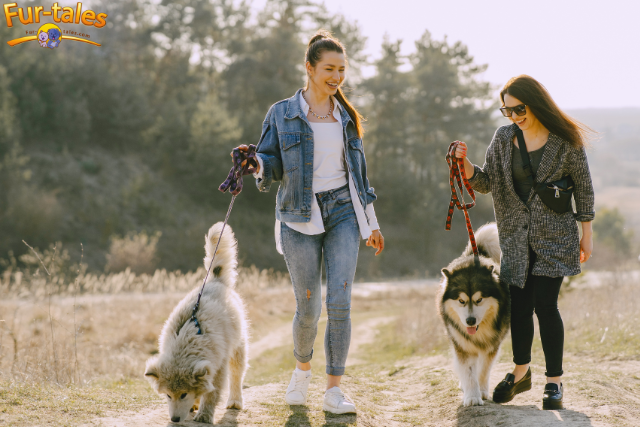
How to Train Your Dog to Walk Calmly on a Leash
Taking your dog for a walk should be one of the most enjoyable experiences for both of you. But if your dog constantly pulls, lags, or freezes during walks, it can quickly become frustrating. The good news? With the right approach, you can teach your dog how to walk politely on a leash—and transform your daily stroll into a pleasant bonding activity.
This guide explores practical, step-by-step strategies to help your dog develop good leash manners, using patience, the right gear, and positive reinforcement.
Why Dogs Struggle with Leash Walking
Understanding why some dogs resist or misbehave on the leash is the first step toward improvement.
Common Causes of Leash Challenges
- Unfamiliarity: Puppies or adopted dogs may not be used to wearing a leash or harness.
- Excessive Excitement: Dogs often associate leashes with outdoor fun and can become overexcited.
- Anxiety or Fear: Negative past experiences or under-socialization can make outdoor walks scary.
- Instinct to Explore: Dogs naturally want to follow scents and chase movement—behaviors that often conflict with controlled walking.
Gear Up: Choosing the Right Equipment
The tools you use can make or break your leash training efforts.
Must-Haves for Leash Training
- Standard Leash: A durable 4–6 foot leash allows control while offering some freedom.
- Well-Fitting Collar or Harness: Choose a no-pull harness for dogs that tend to lunge.
- Training Treats: Small, high-value treats help keep your dog motivated.
- Positive Attitude: Stay calm and encouraging—your dog will feed off your energy.
Step-by-Step Leash Training Plan
1. Get Comfortable with the Gear
Let your dog wear their harness and leash indoors so they can get used to the feel. Offer treats and praise to create positive associations.
2. Start in a Distraction-Free Area
Begin indoors or in a fenced backyard where your dog feels safe. Walk short distances, rewarding them for walking close to you.
3. Teach a Position Command
Use a treat to lure your dog into walking by your side. As they follow, say a cue like “heel” or “walk with me.” Reward them when they stay in position.
4. Stop Pulling in Its Tracks
The moment your dog pulls, stop walking. Stand still until they return to your side, then continue and reward. This teaches them that pulling doesn’t get them where they want to go.
5. Take Training Outside Slowly
Gradually move training into more stimulating environments. Begin with quiet areas and short walks, then increase exposure to busy sidewalks or parks.
6. Reinforce Loose-Leash Walking
Encourage your dog to walk with a slack leash. If they forge ahead, stop or gently change direction. Praise and reward when they adjust and walk beside you.
7. Use the “Let’s Go” Cue
Train your dog to understand that “let’s go” means time to walk forward. It sets the tone for focused movement and teamwork.
8. Handle Distractions with Focus Training
Teach “watch me” or “focus” cues to redirect your dog’s attention when other dogs, people, or smells tempt them. Reward eye contact and calm behavior.
How to Troubleshoot Common Leash Problems
If Your Dog Pulls:
- Pause: Stop walking the instant they pull.
- Change Direction: Gently turn and walk the other way to regain attention.
If Your Dog Lags Behind:
- Encourage Forward Movement: Use a cheerful voice and treat lure.
- Use a Short Leash: Helps keep your dog engaged and by your side.
If Your Dog is Fearful:
- Create Positive Associations: Pair leash time with treats and short, calm sessions.
- Start in Safe Zones: Avoid overwhelming environments until confidence builds.
If Your Dog is Overly Excited:
- Wait It Out: Don’t start walking until your dog is calm.
- Limit Walk Time: Keep sessions short to avoid sensory overload.
Advanced Training Tools and Techniques
Group Training Classes
Obedience classes offer socialization, professional instruction, and structured practice.
Head Collars
Head halters can give you more control during walks, especially with strong pullers. Be sure to introduce them gradually and correctly.
Clicker Training
Using a clicker to mark good behavior adds clarity and timing to your training routine.
Staying Consistent for Lasting Success
Everyone Must Be on the Same Page
Ensure all family members use the same commands and techniques. Inconsistency can confuse your dog and slow progress.
Practice Regularly
Daily walks and short training sessions help reinforce good habits. Even a few focused minutes per day make a big difference.
Create a Positive Walking Routine
Make Walks a Daily Habit
Routine walks not only reinforce training but provide exercise and mental stimulation.
Burn Excess Energy
Playtime before training sessions helps reduce hyperactivity, making leash lessons more productive.
Be Patient and Encouraging
Every dog learns at their own pace. Celebrate progress—even small steps—and maintain a calm, supportive attitude.
Final Thoughts
Teaching your dog to walk nicely on a leash takes time, effort, and plenty of encouragement—but the reward is well worth it. With consistent training, the right tools, and a patient approach, you’ll be able to enjoy stress-free walks and build a stronger bond with your four-legged friend.
Remember: leash walking is a journey, not a race. Stay positive, and your pup will soon be walking by your side like a pro.
Image Sources Using Canva
